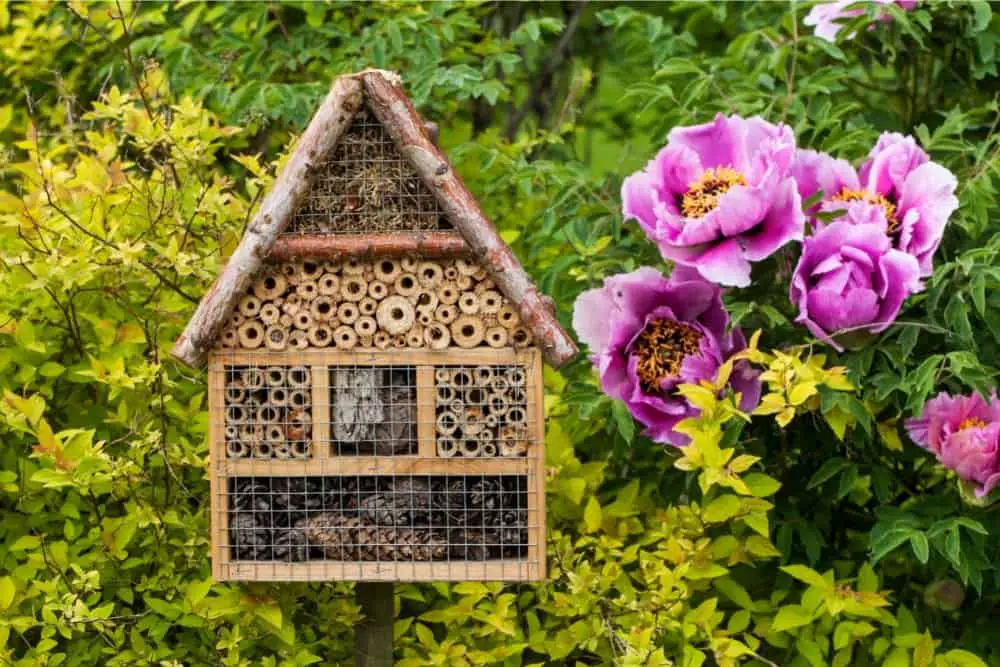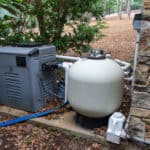Bees like almost every other animal, including man, on Earth, are facing an unprecedented and catastrophic threat to their continued existence, Climate change and the growing agricultural dependency on pesticides have drastically reduced the worldwide number of bees.
As the humble honey bee is teetering on the edge of uncertainty, we all feel a responsibility to do whatever we can to help to ensure that they can, and will endure, while we attempt to fight, and reverse the continuing threat of global warming.

One of the most popular ways to extend a helping hand to bees, one that’s captured the imagination of the mainstream and in doing so has become part of the public zeitgeist, is by setting up a bee house in your garden.
These houses or bee hotels are designed to give bees a place to rest and recuperate and offer solitary species like Leafcutter and Yellow-Faced bees who nest in cavities rather than hives, somewhere to breed and call home.
But there is an ongoing, and furiously fought intellectual battle between apiarists about how effective they actually are and whether or not they actually help bees.
Some argue that they provide an alternative habitat for endangered species and that their continuing proliferation and usage should be actively encouraged, and that as well as bees they also attract other pollinating insects like wasps, and are ultimately beneficial to both the environment and the bees that they’re meant to help.
Others however insist that bee houses and hotels provide a sanctuary for invasive species like the African honey bee whose presence can actively discourage native pollinators from taking up residence.
They also argue that like any “hotel” if a bee house isn’t cleaned and treated properly, then it can become harmful to the residents that it’s meant to attract as mold and fungus that can be fatal to bees can grow and flourish in the unsanitary conditions that can develop in any bee houses that are “left to their devices”
So do bee houses work? Yes they do, and yes they can, but only if they’re treated properly and cleaned and prepared for the insects that are going to make their homes in it. If they’re not treated with the proper care and respect that they need, then they can ultimately end up doing more harm than good.
Are Bee Houses Dangerous?
The problem with a lot of bee houses that ultimately makes them unsafe for bees is that they are poorly designed and mass-manufactured and sold merely as a way to make a profit by capitalizing on the current popularity of a gradually awakening, worldwide ecological consciousness.
In other words, a lot of bee houses are badly and cheaply made and as a result of that, end up becoming dangerous to the animals that they’re meant to help instead of the sanctuaries that they’re actually supposed to be.
In order to provide a safe, nesting space for bees, houses and hotels need to be cleaned and prepared properly, but if they’re not designed with this in mind and their construction makes it difficult to clean and prepare them, then bee houses can become infested with mold and fungus, both of which can be fatal and help to spread disease among bees and other pollinating insects.
Bee houses can also attract wasps as well as bees, and while the latter isn’t aggressive the former is, and can, and will, with very little provocation sting anyone that they perceive to be a threat.
While most of us can, and do just shrug off a single wasp sting, if anyone who is allergic to the venom that wasps inject is stung, it can prove to be fatal. This means that bee houses aren’t just dangerous to the insects that they’re meant to protect, they can also be harmful to anyone who crosses paths with their residents.

When Should You Put Out A Bee House?
Most apiarists will tell you that there really is no bad time to put out a bee house, as some cavity-nesting species like the Mason bee breed in late Spring, but depending on the climate where you live, the best time to hang your bee house is, realistically, late winter.
When you’ve hung your bee house, you can then leave it in place throughout Spring and Summer, but it is advisable to find somewhere slightly warmer to store it throughout Fall and Winter.
While you don’t need to bring it into your house, ideally you should find somewhere with a little shelter that won’t be affected by a sudden decrease in temperature, frost, or snow, all of which could be disastrous for any hibernating bees or eggs that might be inside your house.
The most common solution to where to keep a bee house or hotel, and one that we firmly believe in and adhere to, during Fall or Winter is to relocate it to either your shed or garage, both of which will provide more than sufficient shelter and warmth for any residents who might have made their home in it.
Where’s The Best Place To Hang A Bee House?
Again, opinions about the best place to hang a bee house vary wildly, but there is some common consensus that’s based solely on the idea of providing a safe, secure, and protected habitat for bees.
The rear of the bee house should, if possible, be placed against a flat surface and the house should be sheltered on all sides, bar the entrance to protect it from the wind and temperature differentials. If you intend to hang your bee house all year round, then the front of the house should face South West in order to maximize the amount of sunlight that it will receive during the winter months.
Taking all that into consideration, if you have a tree in your garden or yard that fulfills any or all those requirements, then it will provide a perfect location to hang your bee house.
But remember to be careful if you’re going to climb the tree to hang it, and if you can find a way to hang your bee house without hammering a nail into the tree, then take advantage of it. The path of least resistance, especially in the natural world, is always the better one to follow.
How Do You Attract Bees To A Bee House?
There are a number of different ways to attract bees to your bee house, and all are equally effective. Ensure that the entrance to the bee house is south facing, as that way it will receive more light and heat from the sun, both of which will draw bees to your bee house.
Smearing a thin covering of beeswax around the entrance will also act as a lure for bees, as will any wildflowers in close proximity to the bee house. And as bees, just like every animal, need to eat and drink, a little water mixed with sugar left at the entrance of your bee house should attract the attention of any wandering bees looking to set up home somewhere new.
But time, and the fact that you’ve set a bee house up in your garden, are ultimately just as effective at encouraging bees to use, and live in the shelter that you’ve created for them. After all, they’re called houses for a reason, and every bee will eventually find its own way home.





